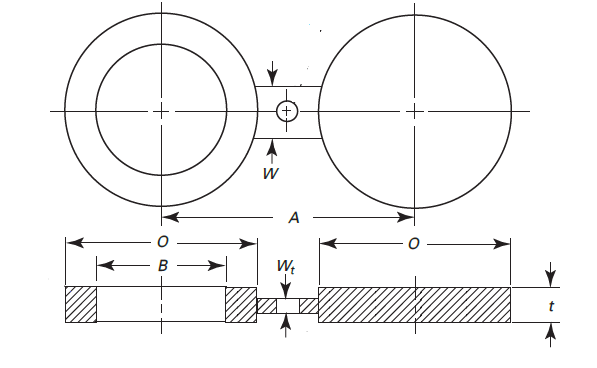Understanding ASME B16.48 Line Blanks: Paddle Blinds, Spacers & Spectacle Blinds


Line blanks — sometimes called paddle blinds, spades, spacers, or spectacle blinds are critical components for isolating piping systems during maintenance, inspection, or pressure testing. ASME B16.48 provides the standard that governs the design and use of these specialized fittings.
This blog will explore the basics of line blanks, what ASME B16.48 covers, and when and why they’re used in industrial piping systems.
What Is ASME B16.48?
ASME B16.48 is the governing standard for line blanks used with flanged piping systems in sizes NPS 1/2" to 24", for pressure classes 150 to 600.
It covers:
-
Paddle blanks (spades)
-
Paddle spacers (rings)
-
Spectacle blinds (combination of blind + spacer)
These components are designed to be inserted between flanges to stop or allow flow in the pipeline.
Types of Line Blanks
Paddle Blind (Spade)
-
A solid metal plate used to completely block the flow
-
Installed between two flanges
-
Has a handle with identification (e.g., size, rating, heat number)
-
Typically used in systems that require frequent isolation
Paddle Spacer (Ring)
-
A metal ring with an open bore
-
Replaces the spade during normal operation
-
Used to maintain flange spacing when the blind is removed
Spectacle Blind
-
A single fitting with a blind end and a ring end, connected by a web
-
Installed by rotating between open and closed positions
-
Ideal when frequent switching between flow and no-flow is required
Common Applications
Line blanks are used in industries where safe, positive isolation is essential:
-
Refineries and petrochemical plants
-
Power generation
-
Natural gas facilities
-
Offshore platforms
-
Pulp and paper mills
-
Chemical processing units
Benefits of Using B16.48 Line Blanks
-
Positive Isolation: Provides physical, verifiable blockage for safety-critical operations
-
Simple to Operate: Easy visual confirmation of open or closed status
-
No Leakage: Unlike valves, blinds provide a zero-leak seal when bolted in place
-
Cost-Effective: Ideal for sections that don’t require active throttling or modulating
-
Standards-Compliant: Ensures interchangeability and dimensional accuracy across manufacturers
Material & Marking Requirements
ASME B16.48 specifies material requirements based on:
-
Material group (carbon steel, stainless steel, alloy steel, etc.)
-
Pressure class rating (150, 300, 600)
Each blind or spacer must be:
-
Clearly marked with size, rating, heat number, and material
-
Manufactured with traceability, especially for critical services
-
Faced to match flange type
Installation & Maintenance Notes
-
Always confirm the system is depressurized before inserting or removing blinds
-
Ensure proper gasket alignment and torque when reinstalling
-
Store unused blinds/spacers in clean, dry conditions to avoid corrosion or damage
Get ASME B16.48 Line Blanks at Hayward Pipe
At Hayward Pipe & Supply Co., we offer:
-
Paddle blinds, spacers, and spectacle blinds in a full range of sizes and pressure classes
-
Materials include carbon steel, 304/316 stainless, and alloys
-
Custom fabrication options for non-standard lengths, thicknesses, or handle configurations
-
Fast shipping and technical support for all industrial and process piping needs
Line blanks may be simple, but the safety and control they offer are indispensable. Make sure your system is equipped with the right components — compliant with ASME B16.48 and ready for reliable service.

